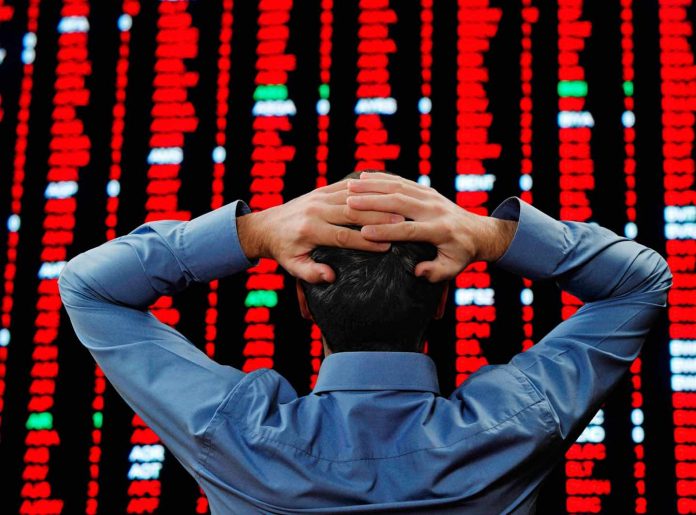Equities sunk once again after the release of some poor economic data, signaling to investors that a slowdown might actually be coming. We’ve been seeing signals of it for months now, but on the heels of a no-rate-hike plan announcement from the Fed, it looks like bulls are starting to (finally) get nervous.
The Dow dropped 300 points quickly after today’s open, while the S&P plunged over 1.2 percent. The NASDAQ Composite got in on the fun as well, falling roughly 1 percent as of midday.
Peter Cardillo, chief market economist at Spartan Capital Securities said, “there’s a host of worries out there and those worries continue to mount,” adding that, “the fear of recession is increasing.”
“As a result, we have a market that is rethinking some of the optimism that was priced in.”
The “priced in” low interest rate gains were something we’ve talked about here recently, and it seems that other analysts are starting to agree with our position now that the market’s showing a possible sentiment shift.
Nike made things even worse when it reported weak quarterly sales growth during its earnings report last night, dragging down many other stocks due to its high-market-cap status.
But the real star of the show today is a set of manufacturing data out of Europe, as reported by IHS Markit, a London-based global information provider.
According to the data agency, German manufacturing activity has dropped to its lowest level in more than six years, and French manufacturing has reached a new three-month low. As a whole, Europe’s manufacturing output has fallen to its lowest level since April 2013.
German bonds were sent spinning after the statistics were released, and the 10-year bund yield actually dipped into negative territory for a moment – something it hasn’t done since 2016.
But bonds weren’t just affected overseas – yields got rocked in the U.S. as well. The 3-month T-bill and 10-year note spread turned negative for the first time since 2007, creating an inverted yield curve. The last time that happened was back in 2007, right before the financial crisis kicked off.
Bond yields, in general, are an often-overlooked part of investing. After all, bonds present low returns, over long time periods, and the only time we typically hear about T-bills is in relation to interest rate manipulation by the Fed.
But bond yields can also serve as a “canary in the coalmine” for the market, if nothing else to give us an idea of investor confidence. Based on yields alone, the last time confidence was this low was before the market got smashed during the 2008 housing crisis.
Even if another full-blown catastrophe isn’t in the cards, at the very least it appears that sentiment is starting to shift – with or without a great recession-like event.
And if bulls start to sense that this prolonged rally is truly starting to turn sour, they’ll become bears in the blink of an eye, cratering equities in the process.








